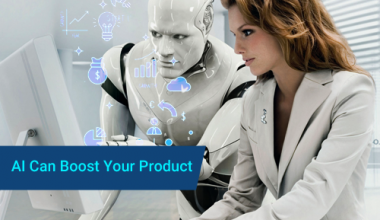People have become picky eaters. Our ancestors ate whatever they could forage, but modern day Homo Sapiens expect gourmet meals at street food prices on demand. Consumers prefer fast, affordable, healthy, and delicious. To meet fickle consumer tastes, food and beverage (F&B) companies look to artificial intelligence to help them scale new products and stay profitable. Whether they are hacking logistics, human resources, compliance, or customer experience, these smart brands recognize the game-altering impact of AI on how fast-moving consumer goods (FMCG) are produced, packaged, stored, distributed, marketed, and consumed. Artificial intelligence and machine learning are impacting fundamentally the consumer packaged goods (CPG)and food and beverage industries.
Aside from the challenge of mounting consumer expectations, established food and beverage companies are also facing a shift in customer trends away from global conglomerates towards local, artisanal providers. Eaters and drinkers are demonstrating not only a willingness to shovel out more money for a “handcrafted” experience, they’re also getting caught up in the DIY preparation trend of home cooking and craft brewing.
“CPG in general is facing this perfect storm where activist investors are expecting a lot in margin while consumers expect more high-quality tailored products … along with better service,” explains Ben Stiller, who heads digital transformation and analytics for Deloitte’s Consumer Products Business. Stiller’s comment reveals why brands are intrigued by the near-magical promise of AI: “Pressure to do more with less.” No wonder many players in the CPG (or FMCG) space are going beyond automation to the more esoteric fields of big data, machine learning, and other aspects of artificial intelligence.
A TASTE FOR TROUBLE
Consumers judge food based on its impact on their palate and their wallet, but successful food brands with staying power require more than just a killer recipe. Any of the following challenges regularly plague CPG companies trying to speed up and maintain innovation:
Product design and specifications (the recipe in case of food processing)
Raw materials (or the ingredients) to create the product
Equipment, tools and machinery to scale production
Venue (processing plant, factory floor, etc) where the product is assembled/processed
Safety and quality control implementation
Compliance to government/international regulatory standards (health, environmental, safety, financial, zoning, etc.)
Product packaging and tracking system
Inventory management for storage and distribution
Logistics and transport for distribution
Marketing and public relations
Long-term engagement with partners and intermediaries for sale
Back office operations
Sales and order tracking that follows the brand’s supply chain, manufacturing, and logistics processes
Long list of problems, isn’t it? In addition to minding all the possible points of failure mentioned above, food and beverage companies need to mitigate significant risks like contamination and spoilage control, even when the products in questions have been passed along to retainers and no longer within their control.
Read the source article at Topbots.com.
Source: AI Trends






